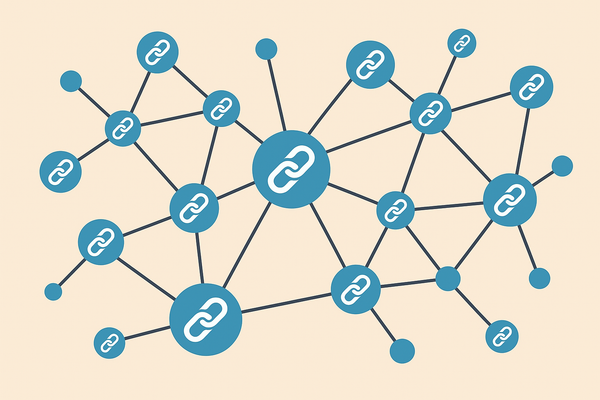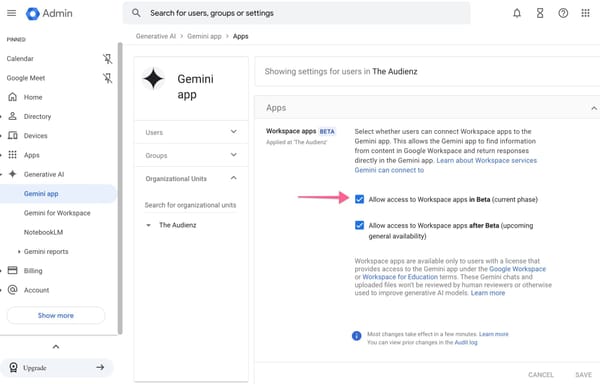Backlinks Are Dead (And Why That's Actually Great News for Your SEO)

Remember when getting backlinks was as simple as asking nicely and maybe offering to return the favor? Yeah, those days are long gone. I learned this the hard way when a client's rankings tanked overnight, despite having hundreds of "quality" backlinks. That's when I realized we'd been playing by rules that no longer existed.
Look, I'm going to be straight with you - the whole backlink game has completely flipped upside down. While 93.8% of SEO folks still believe quality beats quantity (and they're right), what's really happening goes way deeper than just "get better links."
Search engines now think about backlinks the same way you and I think about recommendations from friends. They're not just counting links anymore - they're asking "Does this make sense? Would a real person actually click this? Why would someone mention this here?"
I've been watching this shift happen over the past few years, and honestly? It's the best thing that could have happened to our industry. We're finally done with the sleazy, numbers-game nonsense that made SEO feel dirty for so long.

Table of Contents
- The Psychology Behind Modern Link Authority
- How Search Engines Detect Sneaky Link Schemes
- Building Link Ecosystems That Actually Work
- The Hidden Types of Backlinks You're Missing
- Getting and Checking Your Backlinks the Right Way
TL;DR
- Search engines now think like humans - they care about context, timing, and whether links actually make sense
- AI can spot fake link networks through tiny patterns you didn't even know existed
- The best strategy isn't chasing individual links - it's building real relationships
- There are types of backlinks most people completely ignore (and they're goldmines)
- You need solid systems for both getting quality backlinks and making sure they're actually helping
The Psychology Behind Modern Link Authority
Here's what's wild - search engines have basically learned to think like people when they look at your backlinks. They're not just counting anymore. They're asking the same questions you'd ask when a friend recommends a restaurant: Who's recommending it? Why? Do I trust this person's taste?
This shift is huge. We're not dealing with simple vote-counting systems anymore. We're working with AI that actually understands context and relationships.
What I find fascinating is how this mirrors real life. When someone tells you about a great pizza place, you don't just tally up how many people mentioned it. You think about who's telling you, whether they know good pizza, and if their taste matches yours. Search engines do the exact same thing now.
How Search Engines Actually Think About Your Links
Modern algorithms look at backlinks through how real people actually think. Basically, they ask: "How hard would it be for a human to understand why this link exists?"
If the connection feels forced or weird, the link loses value. It's that simple.
Think about it - if a cooking blog links to your fitness site, there better be some logical reason that makes sense to actual people. Maybe they're talking about healthy meal prep for athletes. That works. But if they're reviewing pasta recipes and randomly link to your gym? That's going to raise red flags.
Context Is Everything Now
Search engines use natural language processing to figure out how well topics actually relate to each other. They measure the "semantic distance" between your content and the content linking to you.
I've seen this play out over and over with clients. The most successful link campaigns now focus on finding those natural connection points between different topics. The trick is identifying what real human interests bridge different subjects.
Here's a real example: I had a client who sells productivity software. Instead of chasing links from generic business blogs, we found the sweet spot with parenting websites. Why? Because working parents are obsessed with productivity tools. The connection made perfect sense to real people, and search engines loved it.

How Authority Actually Flows Between Sites
Authority moves through websites based on relationships and trust - just like in real life. The stronger the relationship and higher the trust, the more authority gets passed along.
This creates interesting opportunities. A strong relationship with a moderately authoritative site often beats a weak connection with a high-authority domain. It's like getting a personal recommendation from a good friend versus a brief mention from a celebrity who doesn't really know you.
Timing Matters More Than You Think
The when, how, and lifecycle of your backlinks is huge now. Search engines analyze timing patterns to figure out whether backlinks developed naturally or if someone's trying to game the system.
Getting backlinks has always been about timing, but now the algorithms are smart enough to catch unnatural patterns that would have fooled earlier systems. The good news? Natural timing is actually easier to achieve when you focus on creating real value.
Why Getting Links Too Fast Will Hurt You
If you get 50 backlinks overnight, algorithms assume something fishy is happening. And they're usually right.
Real content gets discovered gradually. People share it organically. It builds momentum over time. Sudden spikes in backlinks just don't match how humans actually behave.
I've watched websites get penalized for what seemed like successful campaigns. The problem wasn't the quality of individual links - it was the unnatural speed that made the whole thing look manipulative.
Links That Stick Around Are Worth More
Backlinks that stay active for months and years gain compound authority. Those that disappear quickly signal manipulation.
Search engines reward consistency because that's how genuine recommendations work in the real world. If someone really believes in your content, they don't link to it for a week and then remove it.
This has completely changed how I approach link building. We now focus on relationships and content that will naturally maintain backlinks over time, rather than chasing quick wins that might disappear.
Your Social Media Actually Affects Your Backlinks
Search engines look at your backlink patterns alongside your social signals and user engagement. They want to see that your backlinks are part of bigger conversations and genuine interest, not just isolated link drops with no supporting activity.
Your backlink strategy can't exist in a vacuum anymore. Social media engagement, email marketing, content distribution - it all influences how search engines interpret your backlinks.
The Emotional Side of Link Building
Here's something most people miss - the emotional context around your backlinks significantly impacts their SEO value. Search engines use sentiment analysis to understand whether backlinks appear in positive, enthusiastic contexts or neutral, obligatory ones.
Emotion drives human behavior, so it drives how algorithms evaluate links too.
Happy Links Are Better Links
Backlinks embedded in positive, enthusiastic content carry more weight than those in neutral environments. When someone links to you while expressing genuine excitement or giving a strong recommendation, search engines recognize and reward that emotional authenticity.
I've started paying attention to the emotional tone of content that links to our clients' sites. The difference in performance between enthusiastic mentions and neutral citations is remarkable.

How Search Engines Detect Sneaky Link Schemes
The AI systems detecting link manipulation now are honestly impressive and terrifying at the same time. They can spot sophisticated schemes that traditional spam detection would completely miss.
What used to work just a few years ago gets caught almost immediately now. The algorithms have gotten scary good at pattern recognition.
Your Website Has a Behavioral Fingerprint
Search engines create unique behavioral signatures for websites and link networks. They can identify manipulation through pattern recognition that goes way beyond checking if domains are related.
Your linking behavior creates a fingerprint that's almost impossible to fake. These fingerprints capture subtle patterns in how you acquire backlinks, the timing of link placement, and even the writing styles of content that links to you.
Tiny Patterns That Give Everything Away
Algorithms detect subtle patterns in your linking behavior, anchor text distribution, and timing that reveal coordinated manipulation efforts. Even tiny consistencies across supposedly unrelated sites can expose link schemes that look natural on the surface.
The scary part is how small these patterns can be. I've seen networks get detected because they used similar sentence structures when linking out, or because their backlink acquisition followed similar weekly patterns across different sites.
What They're Watching | What Gets Detected | How Screwed You Are |
|---|---|---|
Anchor Text Patterns | Unnatural keyword density | Very |
Link Speed | Sudden increases in links | Moderately |
Location Clustering | Links from same areas/IPs | Very |
Content Similarity | Similar page structures | Moderately |
Time Patterns | Links at regular intervals | Slightly |
How AI Groups Suspicious Sites Together
AI systems group websites with similar linking behaviors, identifying private blog networks and link farms through behavioral similarity rather than obvious connections.
Sites that act the same way get treated the same way, regardless of whether they're technically connected. This clustering approach means you can get caught up in penalties even if you're not directly connected to manipulative networks.
Guilt by association has become a real concern in modern SEO.

Backlinks Are More Complicated Now
Backlinks don't have fixed values anymore. Their worth changes based on when and how search engines evaluate them, creating complex relationships across entire link networks.
This makes backlink analysis much more complex than it used to be. The same backlink can help or hurt you depending on the broader context of your link profile and what's happening algorithmically at any given time.
When Links Help and Hurt Simultaneously
The same backlink could boost your rankings in one scenario while triggering penalties in another, depending on how algorithms interpret it at that moment.
I've seen this with clients where a backlink that initially boosted rankings later became problematic as the algorithm's understanding of the linking site evolved. It's frustrating, but it reinforces why you need to focus on genuinely valuable links.
Checking Your Links Can Change Their Value
Here's something weird - the act of checking backlinks through various tools can actually influence how search algorithms perceive and treat them.
This observer effect means that monitoring your backlinks too aggressively might signal manipulation attempts. We need to monitor our link profiles, but excessive checking might actually hurt performance.
When One Bad Link Affects Everything
Changes in one part of a link network can instantly affect seemingly unrelated backlinks. When one site in a network gets penalized, it can impact the value of backlinks throughout the entire ecosystem.
These ripple effects mean your backlink strategy needs to account for the broader ecosystem of sites you're connected to. A single bad actor in your link network can potentially mess with your entire backlink portfolio.
Building Link Ecosystems That Actually Work
Instead of chasing individual backlinks, successful SEO now requires creating comprehensive digital ecosystems that naturally generate and sustain high-value link relationships.
This approach focuses on building genuine relationships and providing real value rather than trying to manipulate metrics. The ecosystem approach represents a fundamental shift in how we think about backlinks and SEO.
We're moving from transactional link building to relationship-based authority development. This takes more patience and strategic thinking, but the results are way more sustainable and valuable.
Creating Win-Win Link Relationships
The most sustainable backlinks come from mutually beneficial relationships between websites. When you create genuine value for other site owners and their audiences, backlinks happen naturally without looking manipulative to search engines.
Building these relationships takes time and effort, but the payoff is enormous. Once you establish genuine partnerships, backlinks flow naturally as part of ongoing collaboration rather than one-off transactions.
Mapping Your Content Ecosystem
Success starts with identifying and connecting with complementary content creators whose audiences naturally overlap with yours. This creates organic link opportunities that make sense to both humans and algorithms.
The best backlinks emerge from genuine collaboration and mutual benefit rather than isolated SEO tactics.
Here's what you need to do:
- Analyze your top-performing content to identify topic clusters
- Map competitor backlink profiles to find ecosystem partners
- Create content calendars that naturally reference ecosystem partners
- Establish regular communication channels with ecosystem members
Real example: A fitness nutrition company built ecosystem relationships by partnering with workout equipment reviewers, meal planning bloggers, and health podcasters. Instead of asking for direct links, they created a comprehensive "Complete Fitness Lifestyle Guide" that naturally referenced and linked to their partners' best content.
In return, partners began organically linking to specific sections of the guide when discussing nutrition topics. This created a web of mutually beneficial citations that search engines recognized as genuine authority signals.
Building Value-First Relationships
Develop systematic approaches to provide value to potential linking partners before requesting backlinks. This creates sustainable relationship foundations that generate links naturally over time.
The value-first approach requires patience, but it builds relationships that generate backlinks consistently over months and years. These relationships become increasingly valuable as both parties grow their authority and audience.
Your action plan:
- Create a value inventory of what you can offer (expertise, audience, tools, content)
- Research potential partners' pain points and goals
- Design value-first outreach sequences
- Track relationship development and link acquisition correlation

How Real Authority Actually Develops
Topical authority emerges from complex interactions between content quality, user behavior, and backlink patterns rather than simple link accumulation.
Authority development is a compound process where early wins create momentum for bigger opportunities. The key is understanding how different types of backlinks contribute to this compound effect and timing your efforts accordingly.
Finding Authority Catalyst Links
Certain types of backlinks trigger algorithmic recognition of expertise and accelerate authority development. These catalyst backlinks create momentum that makes subsequent high-quality links easier to acquire and more valuable when you get them.
Identifying these catalyst opportunities requires understanding both your current authority level and the specific types of backlinks that signal expertise in your industry. The investment in securing these foundational links pays dividends for years.
The Compound Effect of Early Wins
Initial authority gains create momentum that makes subsequent high-quality backlinks easier to acquire and more valuable. Early wins compound over time, making your later link building efforts significantly more effective.
This is why I always recommend clients focus on building a strong foundation before pursuing the most competitive link opportunities. The early investment in authority development makes everything else easier.
Building Backlink Strategies That Can Handle Anything
The strongest backlink profiles become stronger when stressed by algorithm updates rather than weaker. This requires building redundancy and flexibility into your link acquisition strategies.
When setbacks happen in one area, they should strengthen your position in others. This approach provides protection against algorithm changes while positioning you to capitalize on opportunities that arise from market disruption.
Creating Multiple Ways to Get Links
Build multiple pathways for link acquisition so that the failure of one approach strengthens others. Diversification protects you from algorithm changes while creating opportunities to double down on what's working best.
Having multiple acquisition pathways also helps you understand which approaches work best for your specific situation. This knowledge becomes increasingly valuable as you scale your efforts.
How to Get Links | Main Benefit | Risk Level | Time Investment |
|---|---|---|---|
Digital PR & HARO | High-authority mentions | Low | Medium |
Content Partnerships | Sustainable relationships | Low | High |
Resource Page Outreach | Targeted relevance | Medium | Low |
Broken Link Building | Win-win scenarios | Low | Medium |
Original Research | Passive link attraction | Low | High |
Testing Your Strategies Against Changes
Regularly evaluate how your link acquisition strategies would perform under various algorithm update scenarios. This stress testing helps you identify vulnerabilities before they become problems.
Stress testing involves scenario planning and understanding how different types of algorithm changes might affect your link portfolio. This proactive approach helps you stay ahead of potential problems.

The Hidden Types of Backlinks You're Missing
Most SEO professionals still think about backlinks in outdated terms - dofollow versus nofollow, high authority versus low authority. But modern search engines evaluate what are backlinks in SEO through much more sophisticated lenses that consider psychological, timing, and behavioral factors most people never think about.
Here's the thing - two backlinks with identical traditional metrics can perform completely differently based on these hidden factors. Once you understand this stuff, you'll start seeing link opportunities everywhere that your competitors are completely missing.
Looking at Backlinks From Every Angle
Effective backlink analysis requires considering timing, context, behavior, and psychology all at the same time. This multi-dimensional approach reveals why some backlinks perform way better than others, even when traditional metrics suggest they should be similar.
I've been tracking these hidden dimensions for clients, and the insights are game-changing. We've found backlinks from relatively low-authority sites that outperform links from major publications simply because they scored higher on these alternative dimensions.
When Timing Matters Most
The timing of link acquisition, the age of linking domains, and how long backlinks stick around create different value categories that traditional analysis completely misses.
Fresh backlinks from established domains often provide immediate ranking boosts, while links from newer sites might take months to show their full impact. The key is building a portfolio that balances immediate gains with long-term authority development.
Measuring How Deep the Context Goes
The richness of the environment surrounding backlinks varies dramatically, from surface-level mentions to deep contextual integration. Backlinks embedded in rich, relevant context provide way more value than those dropped into thin or unrelated content.
Context depth isn't just about topic relevance - it's about how thoroughly the linking content explores the subject matter and how naturally your link fits into that exploration. Deep context signals genuine editorial value rather than promotional placement.
Real example: A cybersecurity software company discovered that a brief mention in a comprehensive "Enterprise Security Checklist" article generated 300% more referral traffic and stronger ranking improvements than a dedicated product review with multiple backlinks. The contextual integration within a practical, actionable resource created stronger trust signals and user engagement.
Behavioral Resonance Scoring
The best backlinks align with natural user behavior patterns and information-seeking journeys. When backlinks appear where users would naturally expect to find them, they provide more SEO value because they match genuine user intent and behavior.
This means understanding the mental pathway users take when consuming content and ensuring your backlinks appear at logical decision points in that journey. This alignment creates stronger user engagement signals that amplify the direct SEO value of the link.
Understanding the Psychology
Different types of backlinks influence user perception and trust in ways that create compound SEO effects. Backlinks that enhance credibility and user confidence generate positive behavioral signals that amplify their direct SEO value.
The psychological dimension considers how backlinks affect user decision-making and trust formation. Links that appear in contexts that build confidence and reduce uncertainty create stronger positive signals than those in neutral environments.

Getting and Checking Your Backlinks the Right Way
The days of spray-and-pray outreach are over. Modern backlink acquisition demands strategic thinking, relationship building, and sophisticated quality assessment. But here's the thing - when you do it right, the results are exponentially better than the old methods ever were.
Understanding how to get backlinks today means embracing complexity while staying focused on genuine value creation. The most successful campaigns I've run recently have felt more like business development than traditional SEO.
Smart Ways to Actually Get Backlinks
Effective backlink acquisition uses psychology-based approaches that align with modern search engine expectations. These methods focus on earning backlinks through genuine value creation rather than manipulation or generic outreach tactics.
The psychology of modern backlinking involves understanding what motivates people to link naturally and creating those conditions systematically. This approach takes more effort upfront but generates better results with less ongoing maintenance.
The Authority Ladder Strategy
Build backlinks systematically by starting with achievable targets and progressively moving to higher-authority domains as your own authority increases. This creates a natural progression that search engines recognize as legitimate growth.
The ladder approach prevents you from wasting time on unrealistic targets while building the credibility needed to secure better opportunities. Each successful link makes the next level more achievable.
Your step-by-step approach:
- Audit your current domain authority and backlink profile
- Identify websites 10-20 points above your current authority level
- Create content specifically designed to appeal to these mid-tier targets
- Use successful mid-tier backlinks as social proof for higher-authority outreach
Making Others Want to Link to You
Create content and situations where potential linking partners naturally want to reference you without direct solicitation. This reverse psychology approach generates more authentic backlinks that search engines value highly.
The best backlink campaigns feel effortless because they tap into natural human motivations for sharing and referencing valuable resources. When you solve real problems or provide unique insights, backlinks happen organically.
Here's how to do it:
- Identify controversial or incomplete information in your industry
- Create comprehensive, well-researched counter-narratives or completions
- Engage thoughtfully with existing discussions around these topics
- Allow natural discovery and linking to occur through value provision
Real example: A marketing analytics company noticed widespread misinformation about attribution modeling in popular industry blogs. Instead of directly correcting these articles, they created an interactive "Attribution Model Simulator" that let marketers test different scenarios with real data. The tool became so valuable that the original misinformed articles began linking to it as a "better resource," and industry publications started featuring it in roundup posts, generating over 150 high-quality backlinks within six months.
How to Actually Check if Your Backlinks Are Good
Sophisticated backlink verification goes beyond traditional metrics to assess true SEO value and risk factors. This comprehensive approach helps you understand which backlinks are actually helping your SEO and which might be hurting it.
Quality assessment has become crucial as search engines get better at detecting low-value backlinks. What's a backlink worth if it doesn't contribute to your SEO goals? The answer depends on factors most people never consider.
Scoring Links Across Multiple Factors
Evaluate backlinks across relevance, authority, trust, and behavioral factors using a comprehensive framework. This multi-dimensional assessment reveals the true value of your backlinks and helps you prioritize your efforts effectively.
Modern quality scoring considers dozens of factors that traditional tools ignore. The most valuable backlinks often score well across multiple dimensions rather than excelling in just one area.
Your quality assessment checklist:
- Check backlink domain authority and page authority
- Analyze linking page content relevance and quality
- Evaluate linking domain's overall backlink profile health
- Assess user engagement metrics on the linking page
- Monitor referral traffic quality and behavior
Predicting Which Links Will Keep Working
Use historical data and pattern recognition to predict which types of backlinks will provide the most long-term SEO value. This forward-looking approach helps you focus on link opportunities that will continue paying dividends over time.
Predictive analysis helps you avoid investing in backlinks that might lose value due to algorithm changes or industry shifts. The best backlinks maintain or increase their value over time rather than depreciating.
Managing Your Links Like Investments
Apply portfolio theory to backlink acquisition, balancing high-risk/high-reward backlinks with stable, low-risk foundation links. This risk management approach protects your SEO performance while maximizing growth opportunities.
Portfolio management means diversifying across different types of backlinks, industries, and acquisition methods. This diversification provides stability while creating opportunities for outsized gains from high-performing links.

Making Backlinks Work with Everything Else
Backlinks don't exist in isolation - they interact with every other aspect of your SEO performance. Understanding how backlinks work with content, technical SEO, and user experience helps you create effects that amplify your results.
Integration is where most SEO strategies fall short. When you optimize these interactions, the compound effects can be remarkable.
Content-Link Synergy
Design content strategies that naturally attract backlinks while supporting overall topical authority development. This integrated approach ensures your content and link building efforts reinforce each other rather than working separately.
Content-link synergy means creating content that serves multiple purposes - engaging your audience, demonstrating expertise, and providing natural link targets for other creators. This efficiency multiplies the impact of your content investment.
Technical SEO and Backlinks
Site speed, mobile optimization, and technical factors influence the value search engines assign to your backlinks. Ensuring your technical foundation is solid maximizes the impact of every link you earn.
Technical issues can severely limit the value you get from high-quality backlinks. I've seen sites with excellent link profiles underperform because technical problems prevented search engines from properly crediting their backlinks.
Amplifying User Experience
Leverage backlinks to improve user experience signals, creating positive feedback loops that enhance SEO performance. When backlinks drive engaged users to your site, the resulting behavioral signals boost your rankings beyond the direct link value.
User experience amplification happens when backlinks bring visitors who engage deeply with your content, creating positive behavioral signals that reinforce your SEO performance. This creates a virtuous cycle where good backlinks lead to better user metrics, which lead to better rankings.

Final Thoughts
The backlink game has fundamentally changed, and honestly, that's exciting news for anyone willing to adapt. We're moving away from the manipulative, numbers-focused approach that dominated SEO for years toward something that actually makes sense - building genuine relationships and creating real value.
What strikes me most about these changes is how they mirror human psychology and behavior. Search engines aren't just getting smarter; they're getting more human in how they evaluate backlinks. This means the strategies that work best are the ones that would make sense to you as a person browsing the web.
The complexity might seem overwhelming at first, but it's actually liberating once you embrace it. Instead of chasing arbitrary metrics or trying to game the system, you can focus on building something meaningful - relationships, authority, and value that compound over time.
Look, I get it. This approach takes more work than the old "buy 100 backlinks for $50" method. But it's also the only thing that actually works anymore. And when you do it right, the results are so much better than anything those sketchy tactics ever delivered.
Remember, every expert was once a beginner. Start with the ecosystem approach, focus on providing genuine value, and be patient with the process. The backlinks you build today using these principles will likely be more valuable five years from now than they are today. That's the power of building something real in a world full of shortcuts.




